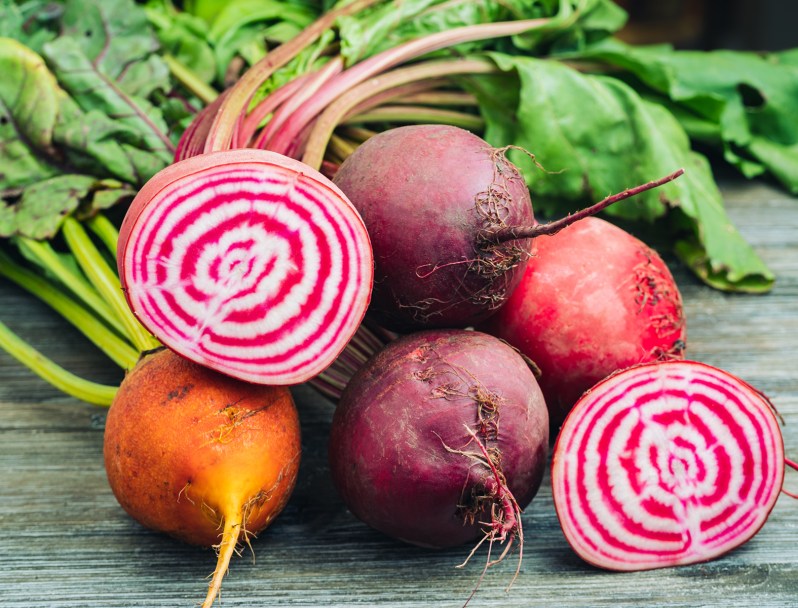
Fall is here, and whether we care to admit it or not, there’s just something about this season that makes us want to find a pumpkin patch, jump on the hayride, and admire the falling leaves in all their cliched, Hallmark movie glory.
While it may not be the first thing on our flannel-wrapped minds, autumn is also the peak season for a plethora of nutritious superfoods. And while no one here is turning down a slice of pecan pie or hot buttered rum, it’s important to have balance and keep our bodies nourished and fighting during cold and flu season. Fall is full of muscle-building, disease-fighting, and body-purifying foods. Here are 10 of the best fall superfoods, their health benefits, and suggestions on how to deliciously prepare them.

Brussels sprouts
Love them or hate them, Brussels sprouts are indeed one of the best superfoods out there. These little guys are absolutely packed with all the good things, like potassium, iron, magnesium, and phosphorus. They are also high in fiber and vitamin K, which is very good for blood and bone health.
Brussels sprouts, as good as they are for us, do have a slightly smelly reputation. Unfairly to them, this is mostly due to improper cooking. Brussels sprouts, like many cruciferous vegetables, contain hydrogen sulfide gas. Add heat, and this gas escapes. And the scent isn’t exactly pleasant — think rotting eggs. When these little sprouts are overcooked and left to sit in a murky, tepid steam pool on the stove, the funk can run wild. That’s why it’s important to cook Brussels sprouts the right way. In fact, you don’t need to cook them at all. They are absolutely delicious raw when simply shaved into a salad. Their flavor is mild and nutty, with pleasingly earthy, slightly bitter notes.
When cooking, Brussels sprouts are lovely roasted on a sheet pan. Simply cut them in half, drizzle with a bit of olive oil, salt, and pepper, and roast at 425 degrees Fahrenheit for about 20 minutes. If your recipe calls for poaching, they need only cook for 5-7 minutes to be perfectly tender. Be sure not to go much longer than that, or you may be reaching for the Febreze.

Apples
This long-standing prom queen of the health food world has enjoyed her reign for years, and we are here for it. How many clichés, idioms, and quotes about apples are there? It turns out, there’s good reason. Even in a world where a “new” health food is discovered every five minutes, everyone knows how to properly pronounce “quinoa”, and poor cauliflower is doing its best to keep up with all the extra work it never signed up for, apples still reign supreme.
Apples contain a high number of antioxidants, as well as generous amounts of vitamin C and fiber. They’ve also been linked to a lower risk of heart disease and type 2 diabetes. If that weren’t enough, many studies have shown that they very well may help fight off many varying kinds of cancer cells. How do you like them apples?
We don’t need to tell you how to eat an apple. Pick one up, and go to town. Embrace the burgeoning fall weather and make yourself some homemade applesauce and cider. Chop them up and bake them into a pie. You really just can’t go wrong.

Kumquats
These odd little cuties are a member of the citrus family and look like grape-sized oranges. Unlike their citrusy cousins, however, you can actually eat the skin of a kumquat, which is deliciously tangy and very sweet. The flesh inside is pleasantly sour, complimented by the sweetness of the skin.
Pop a few of these for a huge boost of antioxidants and vitamin C. They also aid with digestion, boost immunity, and can even help clear up breakouts.
Kumquats are a wonderfully convenient snack, as they needn’t be refrigerated, and are easy to transport. Pick these straight from the tree and you’re good to go. If you’re looking to get a bit more creative, however, kumquats transform into an incredible marmalade and can be candied or even pickled.
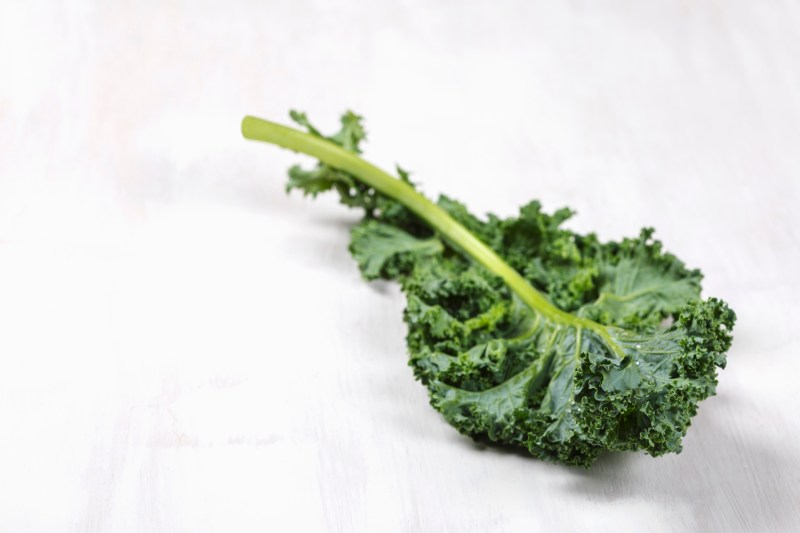
Kale
We know, we know. It’s outplayed. But hear us out. One of the most nutrient-dense foods in the world, kale absolutely slays in the world of good health. One cup of kale provides the body with 684% of the daily value of vitamin K, 206% of vitamin A, and 134% of vitamin C.
Impressed? Cute. That’s just a scratch on the surface. Kale is also bursting with antioxidants, can help lower cholesterol, and contains cancer-fighting power. It’s also incredible for your vision, as it contains lutein and zeaxanthin, two components that aid with failing eyesight. Oh, and it’s been proven to help with weight loss. Mic drop.
Toss kale into just about anything to receive all of these incredible benefits. If you love its slightly bitter, hearty flavor, it’s tremendous as the base of a salad. Alternatively, because of its strength, it holds up beautifully when cooked, unlike other greens like spinach, which tends to dissolve into practically nothing. Stir some into warm pasta, or throw a handful into a hearty soup or stew. Braise it with your favorite cuts of meat. You can even make a kale pesto to use as a spread or sauce on practically anything.

Pomegranates
Pomegranates are arguably one of the most beautiful foods in the world, but they’re so much more than just a pretty face. They are one of the healthiest foods you can enjoy.
Once cracked open, the stunning inner seeds of the fruit, called the arils, are bursting with color and drama, inviting you to dig in and enjoy their luscious beauty. Unfortunately, as gorgeous as they are, they can be a bit annoying to remove. We recommend cutting the pomegranate in half, and then whacking the outer shell with a large spoon to release the seeds.
Pomegranates are notably rich in antioxidants and wonderful for heart health. They also contain polyphenols, which studies have shown can improve endurance in exercise. Some studies have also shown that pomegranates can help the brain from developing both Alzheimer’s and Parkinson’s disease.
It’s difficult to think of a dish that wouldn’t benefit from even a light sprinkling of these jewel-like seeds. Sprinkle them onto a salad, garnish a favorite soup, mix them into a pasta dish, or on top your morning bagel with cream cheese.

Beets
Bears. Beets. Battlestar Galactica. As someone who has been classically trained in culinary arts, considers herself a food professional, and is pretty good at avoiding the low-hanging fruit of food-related jokes, I just can’t look at a beet without laughing. The thing is, though, as off the mark as Dwight sometimes was, he was always right when it came to beets.
These gorgeously colored vegetables have a mild, earthy, somewhat sweet flavor. They are high in key nutrients such as folate, manganese, and copper. In addition to that, they are great for keeping blood pressure at healthy levels, helping fight inflammation, and aiding in both digestive and brain health.
Beets are tremendously versatile as an ingredient and can be enjoyed in many ways. They are delicious roasted, pureed, juiced, and everything in between. When preparing your beets, don’t toss the leaves! These leaves contain the same nutrients and can be prepared the same way you would prepare spinach.
Next stop, Schrute Farms.
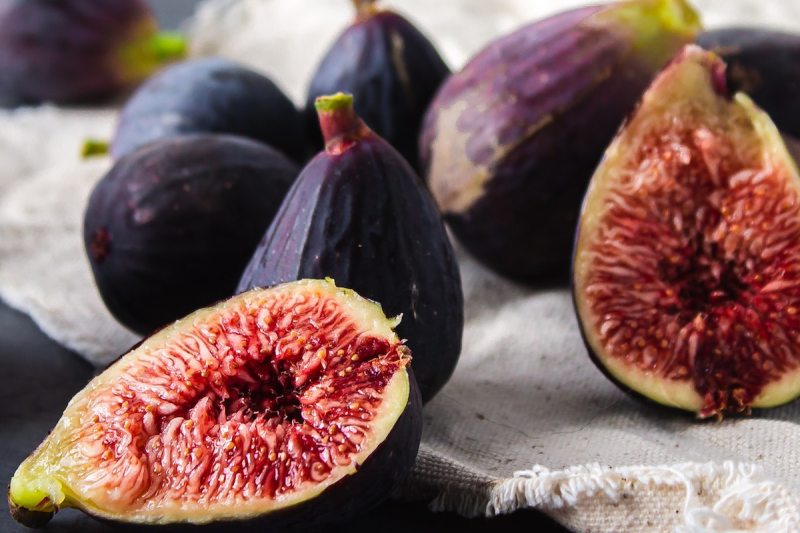
Figs
This ancient, often deeply symbolic fruit has been enjoyed around the world for thousands of years. Grown widely throughout the entire globe, the fig was one of the very first fruit trees to be cultivated. Since then, it’s not lost any of its gusto, enjoyed by millions, globally, every day. Apart from its wealth in history and literature, the fig is also rich in vitamin B6, as well as copper, which aids in energy production and metabolism. Figs are also great for vascular, heart, and digestive health.
Figs’ mild, honey-like sweetness and oddly satisfying inner crunch make this little fruit a pleasure to eat. Like many of the other foods on this list, the fig can be used in numerous ways — raw, served with cheese and prosciutto, or baked into a delicious tart. The fall recipes for figs are abundant.

Persimmons
When I was about 16, my best friend and I were driving down the street when we caught sight of something that made me slam on the breaks. In front of a charming blue house was a little cardboard sign with carefully scrolled letters that read, “Persimmons: $0.50”. Now, I’ve come a long way in my culinary career since then. But at the time, I was under the impression that a persimmon was in fact, a breed of dog.
I can only cast aside my current humiliation at this fact for the sake of what turned out to be a rather humorous story, involving two 16-year-old girls, knocking impatiently on the door of this house, squealing with glee when the woman who opened it confusedly went to get the persimmons as we bounced up and down on her front porch. I don’t need to tell you, we were disappointed. But also so embarrassed that we did in fact leave with a box of persimmons that day.
Since then, I have come to appreciate persimmons for what they actually are — a deliciously sweet, versatile, and healthy ingredient that has countless cooking uses and health benefits. These vivid fruits are full of vitamins and nutrients like potassium and fiber. They are wonderful in aiding digestion, inflammation, and heart health.
Persimmons are tasty both in savory and sweet preparations. Pair slices with goat cheese for a sophisticated fall appetizer, or use persimmon pulp to make the most delectable fall cookies.

Sweet potatoes
These starchy beauties just look like fall. With their rustic skin and vividly orange flesh, this is the time of year when sweet potatoes finally have their moment. After waiting all year to be acknowledged as the beautiful superfood they are, fall recipes highlight the magnificence of this otherwise humdrum root vegetable.
Absolutely packed with fiber, vitamins, minerals, and antioxidants, sweet potatoes can help protect the body from free radical damage which has been linked to illnesses such as heart disease and cancer.
The potato is pretty universally accepted as one of the most versatile foods to ever be, and the sweet potato is no exception. Anything you can do with a regular potato can be done with the sweet variety. Mash it, fry it, bake it, there is no wrong answer.
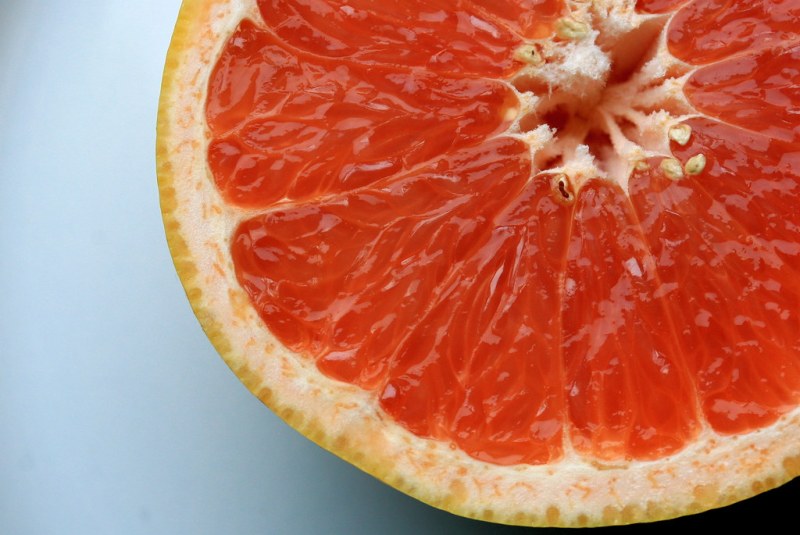
Pink grapefruit
This tartly sweet, sour-in-all-the-right-ways, incredibly juicy ball of goodness is a delight for all of the senses as well as the body. Pink grapefruit, like the good little citrus fruit it is, is tremendously high in vitamin C, which is known for keeping the body protected from bacteria and viruses. In addition to that, grapefruit is high in antioxidants and good for heart health. Citric acid is also contained in pink grapefruit, which has proven to be an effective tool in blocking kidney stones.
While surely our grandmothers taught us all how to eat a grapefruit (halved, with sugar delicately sprinkled on top), we prefer to spice things up a little bit and brulee our pink grapefruit. After halving, simply top each half with a tablespoon of coarse sugar. Using a small blowtorch, melt the sugar until it forms a golden, crisp surface. Sprinkle with a bit of sea salt, and there you have it. A delicious serving of not-your-grandma’s-grapefruit.
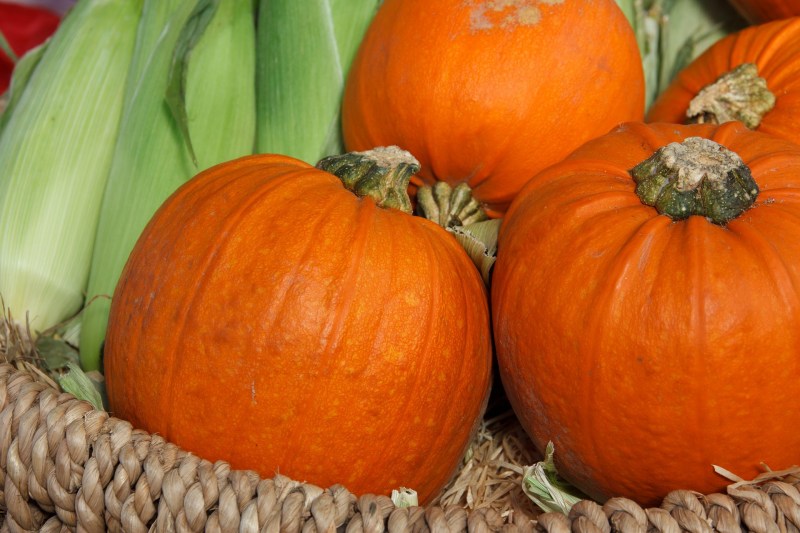
More fall superfoods and why they’re so good for you
- Pumpkin: This is a versatile food that is obvious when it comes to superfoods for fall. Pumpkin is a good source of vitamins A and C, fiber, and potassium. This healthy fall superfood is also low in calories and fat.
- Pears: This fruit is a good source of dietary fiber, vitamin C, and potassium. Pears also contain antioxidants that can help protect your cells from damage.
- Cranberries: Another popular food for this time of year, used in many healthy fall recipes, cranberries are a fruit that is low in calories and fat, but high in nutrients, including vitamins C and E, fiber, and antioxidants. Cranberries have been linked to a number of health benefits, including reducing the risk of urinary tract infections.



